Best Things to Do in Lima’s Historic Centre, Peru
In this blog post you can read about some of the best things to do in Lima’s Historic Centre. You really can’t skip visiting this area of the city where you can learn a lot about its history and also find some of the most impressive architecture dating back to the 16th century.
Note that this blog post only details how to spend a day around Centro Historico. Click here to read about the best things to do in the Miraflores District or the Barranco District. If you’re heading to Lima, then make sure to spend at least 3-days in the city. There’s plenty to do and see, so you won’t have trouble filling up your days.
If you’d like to see what we got up to in Lima, then make sure to watch our dedicated YouTube video. For more Peru videos, check out the Peru Playlist on our YouTube channel.
Disclosure: This post may contain affiliate links, which means we may receive a small commission if you click a link and purchase something. Clicking these links won’t cost you anything, but it will help us to keep this site up and running! Learn more about our affiliate policy.
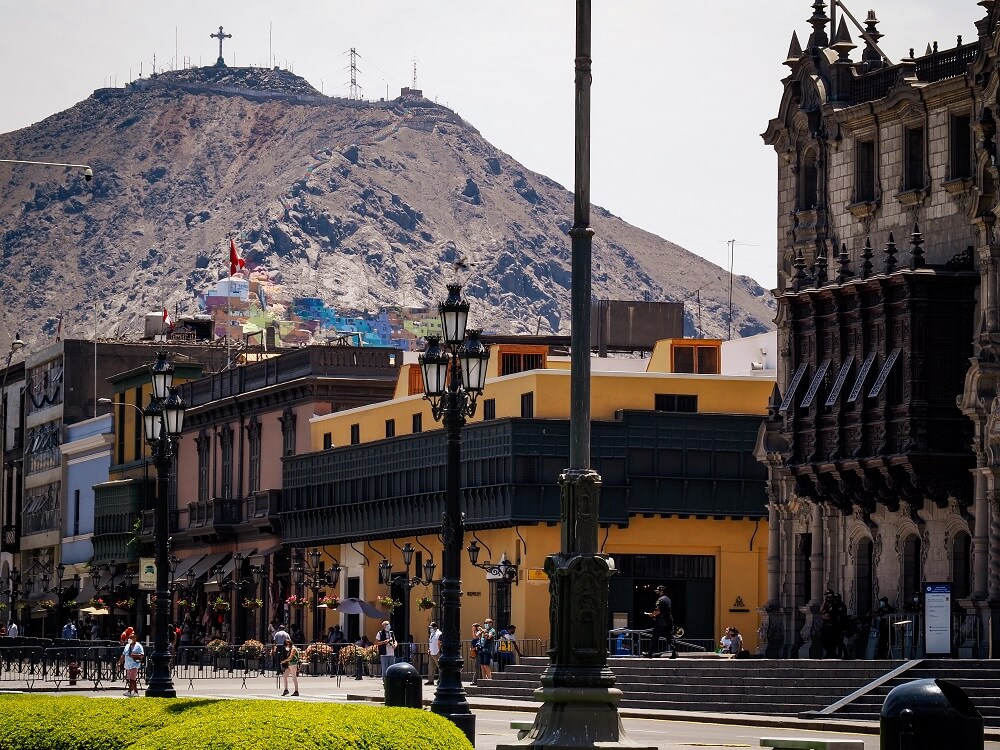
Get to Know Lima’s Historic Centre
Located in the Rimac Valley, the Historic Centre of Lima was founded in 1535 by Spanish conqueror Francisco Pizarro. He named the city Ciudad de los Reyes or, in English, the City of Kings. Over the centuries Lima became one of the most important cities of the Spanish Empire in South America. It was basically the political, cultural, religious and administrative capital.
Even after the 1586, 1687 and 1746 earthquakes that caused major damage, the city remained important. However, after these earthquakes, the majority of the city had to be rebuilt. Due to different building materials and geologic concerns, various building styles were combined which resulted in a very rich architectural heritage.
Lima was at the centre of Spanish South America up until the 18th century. However, in 1821 José de San Martín declared Peru’s independence from Spain at the Plaza de Armas. Lima became the capital of the Republic of Peru.
In 1988, Lima’s Historic Centre was designated a UNESCO World Heritage Site due to its rich history, beautiful architecture and other historic monuments and art.
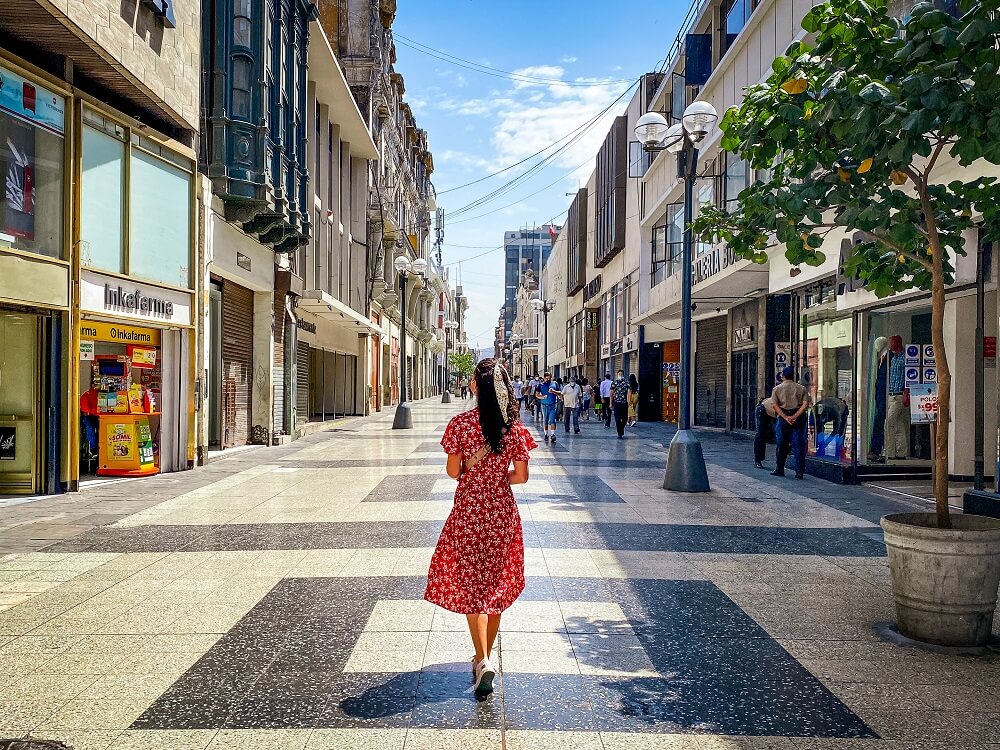
Is Lima’s Historic Centre Safe?
Lima’s Historic Centre is well visited by tourists. There are a lot of tourist police operating in the area, so you’ll be safe walking around during the daytime. However, you’re in a big city, so definitely stay vigilant and cautious as pickpocketing and petty crimes can happen.
In contrast, the Historic Centre can become less safe for tourists at night when compared to other districts such as Miraflores and Barranco. Therefore, when choosing accommodation in Lima, I recommend staying in either Miraflores, Barranco or San Isidro and visiting the Historic Centre during the day.
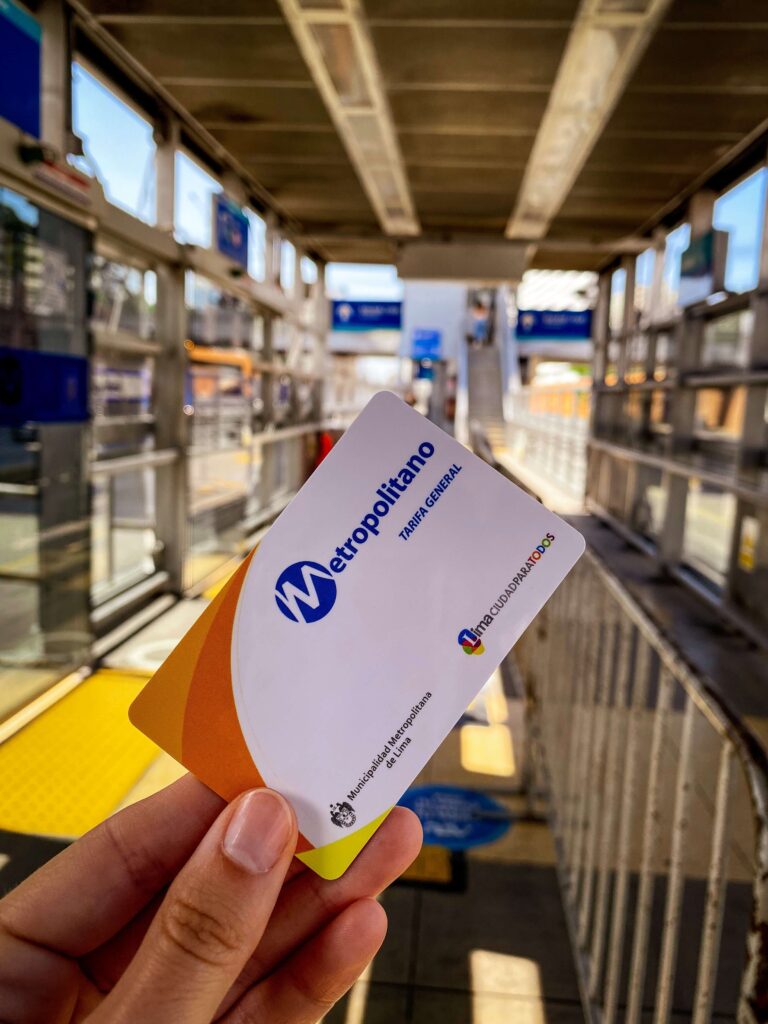

How to Get to Lima’s Historic Centre
If you’re staying in either the Miraflores or Barranco Districts of Lima, then the best way to get to Centro Historico is via El Metropolitano. It’s Lima’s bus rapid transport system, which allows you to get from A to B very quickly.
To use the bus, you’ll have to buy a card first which costs less than S/.5. You’ll have to top up the card with some credit and you can just use this card to enter the bus platforms. I recommend planning your journey in Google Maps to see which bus stop is the closest to where you are staying. The best place to get off the Metropolitano for the Historic Centre is Estación Central. From there, you can easily explore this area on foot.
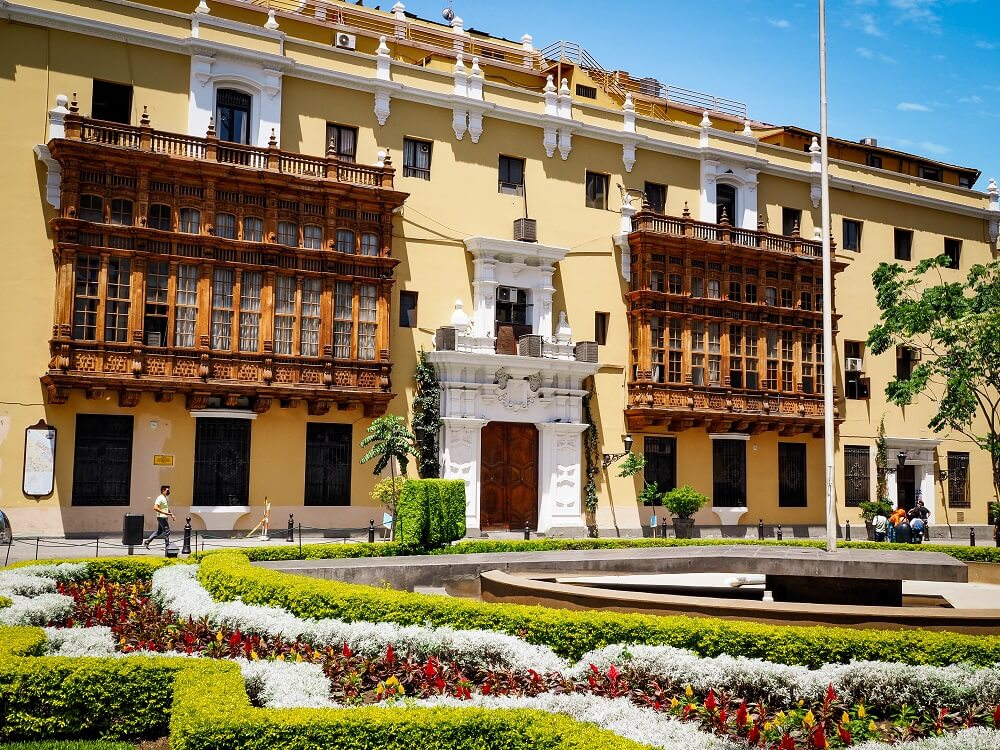
Best Things to Do in Lima’s Historic Centre
1. Walk Around Plaza Mayor / Plaza de Armas
If you’re travelling across Peru, you’ll notice that every city and town in the country will have a main square called ‘Plaza de Armas’. Lima’s colourful main plaza was at the foundation of the ‘City of the Kings’ in 1535. It is also the place where Peru’s independence was declared.
You can walk around the square or just sit down and enjoy the beautiful buildings and watch people going on about their business. Plaza Mayor is surrounded by many important buildings that you should definitely check out. So, once you’re ready to get up, go and have a closer look at the following buildings:
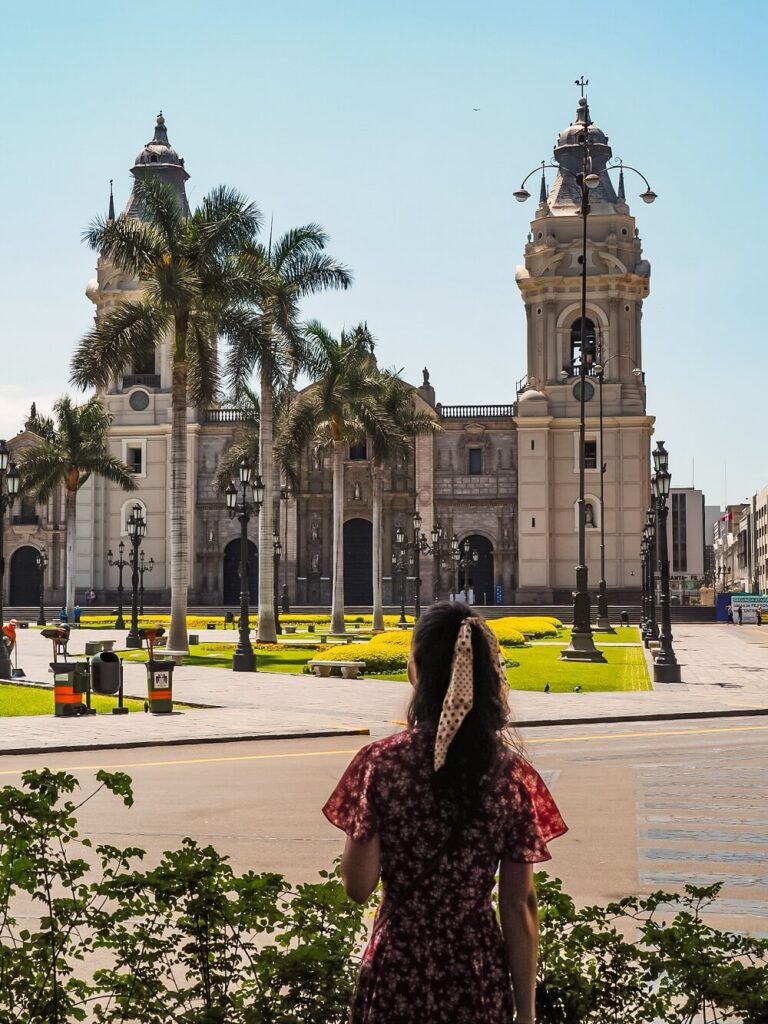
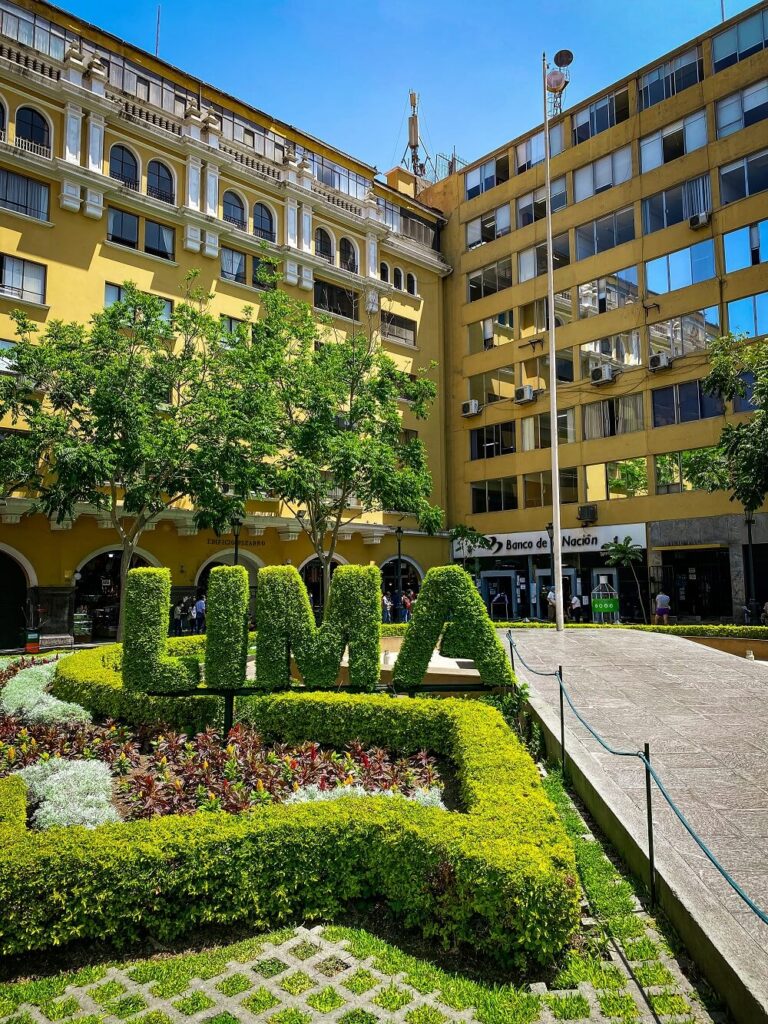
Government Palace / Residential Palace
Located at the northern side of Plaza Mayor is the Government Palace. It was built in 1535 by Francisco Pizarro, and it has been the residence of all the Peruvian Presidents to date.
Top Tip – Arrive just before 11:45AM to witness the changing of the guard that occurs here every day.
Lima Metropolitan Cathedral
Another iconic building to check out at Plaza Mayor is the Lima Metropolitan Cathedral. This Roman Catholic cathedral was built between 1602 and 1797. It is dedicated to St John, Apostle and Evangelist.
Archbishop’s Palace of Lima
The Archbishop’s Palace of Lima is the residence of the Archbishop of Lima. It is also the administrative headquarters of the Roman Catholic Archdiocese of Lima. Construction on the original building started just after 1535. In 1924 the palace was completely reconstructed and renovated. Since 2009 it has been open to the public.
Municipal Palace and Club de la Unión
There are two more buildings you should have a closer look at around Plaza Mayor. One of them is the Municipal Palace, which is the headquarters of the Metropolitan Municipality of Lima. The original building dates back to the early 17th century. Unfortunately, earthquakes and fires have destroyed it several times over the years. The building that you see today was constructed in 1944.
The other yellow building next to the City Hall is the Club de la Unión. It is a non-profit Peruvian civil association that houses the Palacio de la Unión.
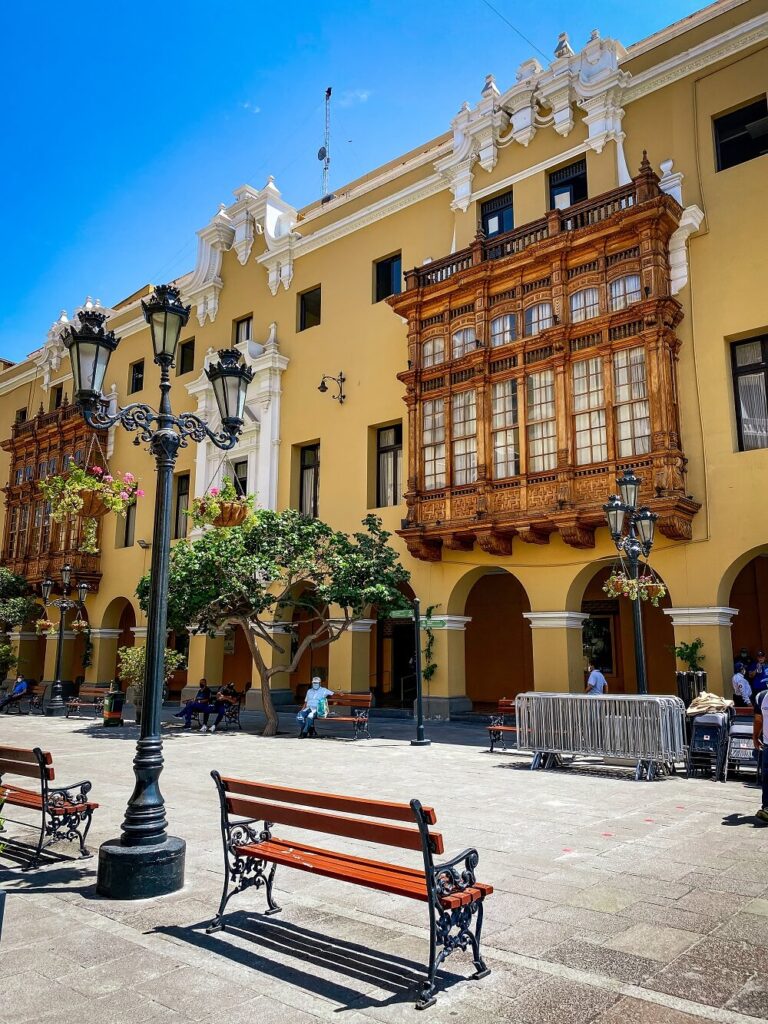
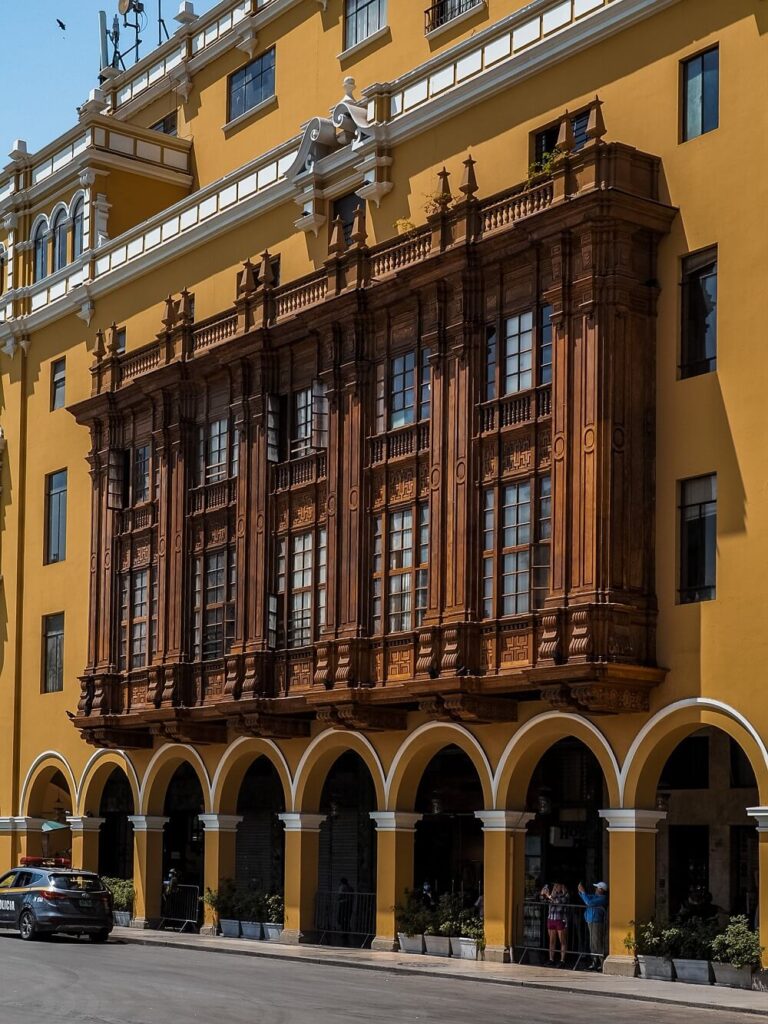
2. Admire the Balconies of Lima
As you wonder around Lima’s Historic Centre, you’ll inevitably notice many beautifully carved wooden balconies. These were built in the late 17th and 18th centuries and are part of Lima’s cultural heritage. The wooden balconies were built in the Renaissance, Baroque, Neoclassical and Neo-Baroque styles but also had Mediterranean, Moorish and Andalusian influences.
What’s interesting about these balconies is that they are completely enclosed when compared to the balconies built in the earlier centuries. This design actually allowed a person – mainly women – to observe the city, but remain hidden. Of course, it was also a place for encounters and gossip.
Apparently there are around 1,600 wooden balconies scattered around Lima. You’ll see many around Plaza Mayor but there are some beautiful examples at Torre Tagle Palace on Ucayali street and at the Osambela Palace.
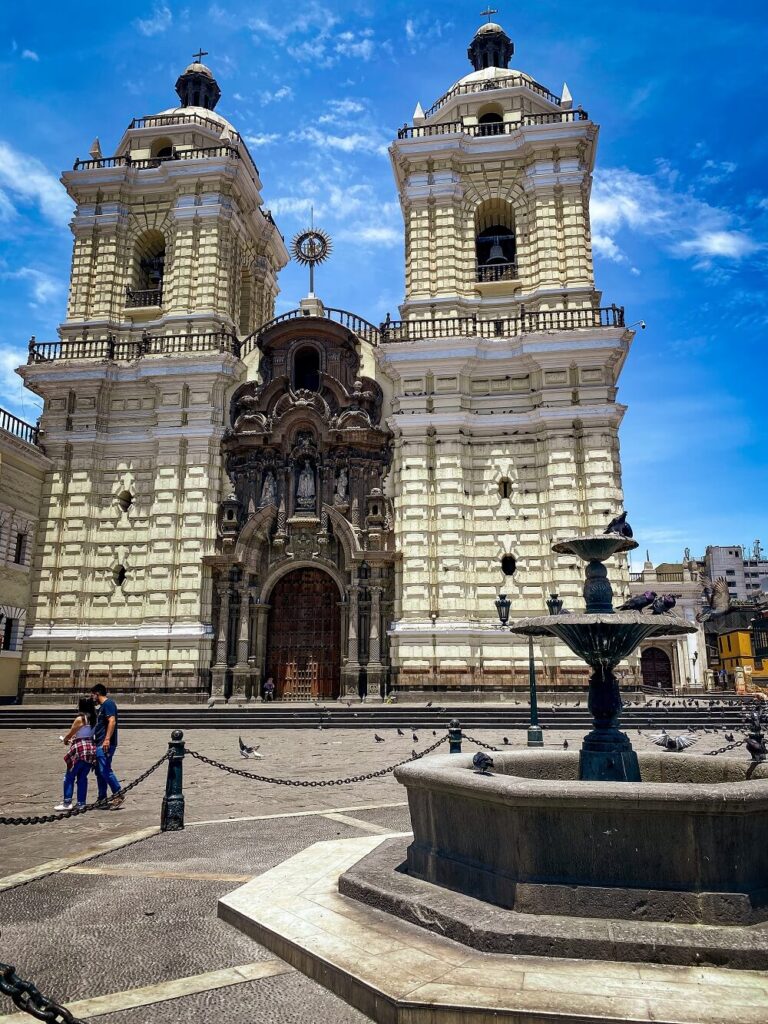

3. Take a Tour of the Church and Convent of San Francisco
Another major tourist attraction in Lima’s Historic Centre is the Church and Convent of San Francisco. The Baroque-style Roman Catholic church and monastery has a beautiful library and underground catacombs. The complex is one of the most impressive examples of colonial architecture in Latin America.
You can only visit it by guided tour which will also help you to learn more about religious life during the Spanish colonial rule. One of the absolute highlights of the tour is the library, which has over 25,000 volumes from the 16th to 20th centuries. The library is absolutely stunning, with wooden carvings and colonial paintings everywhere.
I believe one of the main reasons most tourists take the tour is because of the catacombs. Until 1808, over 30,000 people were buried here, which they only discovered in 1943. Walking around the crypts filled with human skulls and remains is definitely an unusual experience.
Opening Hours – Every day between 9:30AM and 5:30PM.
Entrance Fee – S/.15 (approx. US$4 / £3) for adults which includes the guided tour of between 60 and 90 minutes.
Note – Unfortunately, you can’t take photos inside. We could only take one photo of the human skulls although I would’ve loved to take one of the library. Regardless of the rule, I believe that the tour is well worth the entry fee, so don’t skip it.
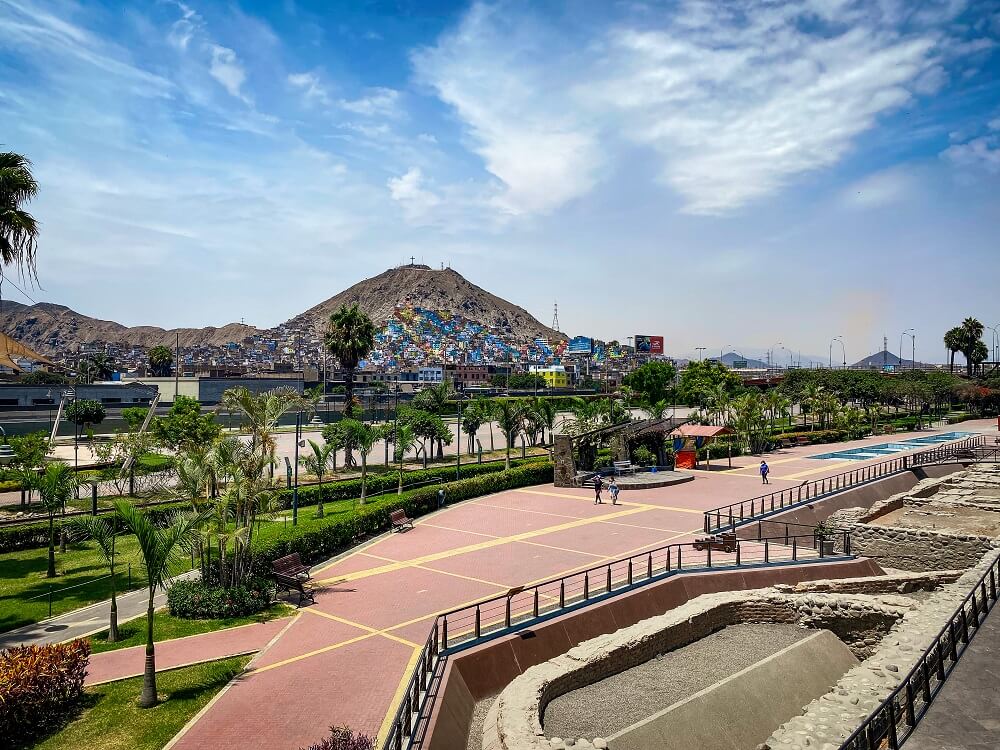
4. Walk Around Parque de la Muralla (Park of the Wall)
Once you’ve had a tour around the Church and Convent of San Francisco, I recommend walking over to Parque de la Muralla. The main feature of this park is the excavation of portions of the ancient walls, erected in the 17th century to protect the city of Lima.
There’s a small museum that explains the history of the wall and also displays pieces and artifacts. You can walk along the Malecon del Rio and check out the statue of Francisco Pizarro, restaurants and souvenir shops.
From here you’ll see a 400m hill called Cerro San Cristobal with a giant crucifix on top. Surrounding the hill are some very colourful buildings. This area is the Rimac District. Although it’s got some interesting attractions such as Plaza de Acho, a bullfight ring, the Church and Convent of the Descalzos and the viewpoint on the hill, it’s definitely an area I would visit with extra caution. Despite all the efforts to improve Rimac’s reputation, it still has many shady and dodgy parts, so bear this in mind and perhaps visit with a guided tour.
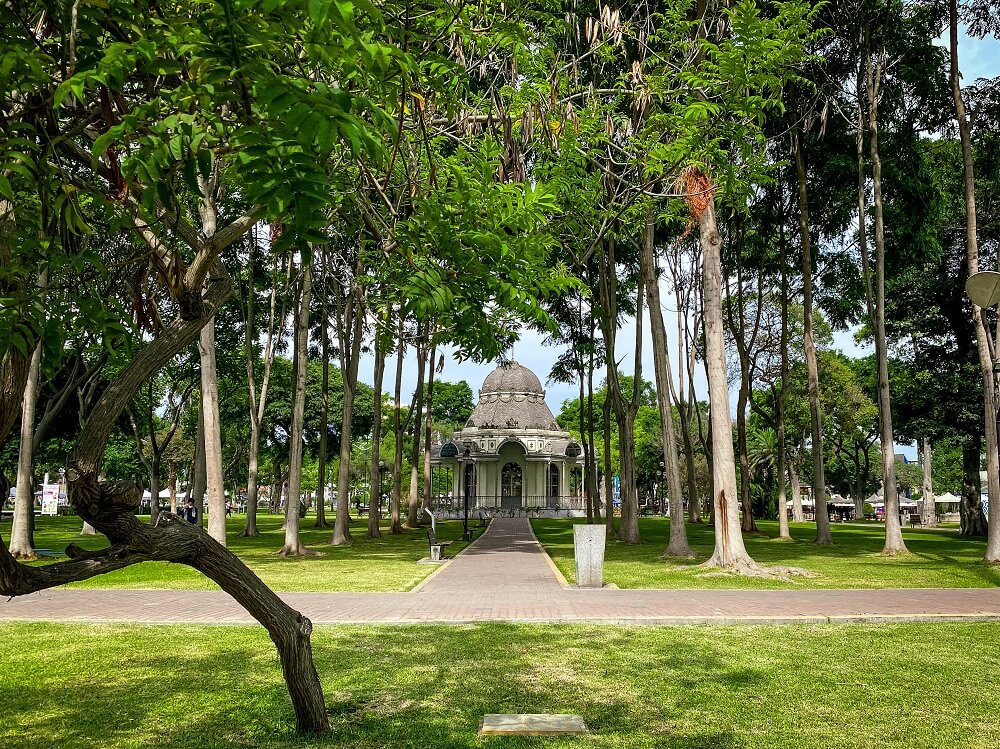
5. Explore Parque de la Exposicion
Just outside the boundaries of the Historic Centre is a beautiful park called Parque de la Exposicion. It is a huge park that serves as an urban recreational and cultural space.
The park has many interesting features such as Botanic and Japanese Gardens, lakes and an amphitheatre. It also has two museums: the Museo de Arte de Lima (MALI) and the Museo Metropolitano de Lima. It is definitely the perfect place to get away from the city’s hustle and bustle.
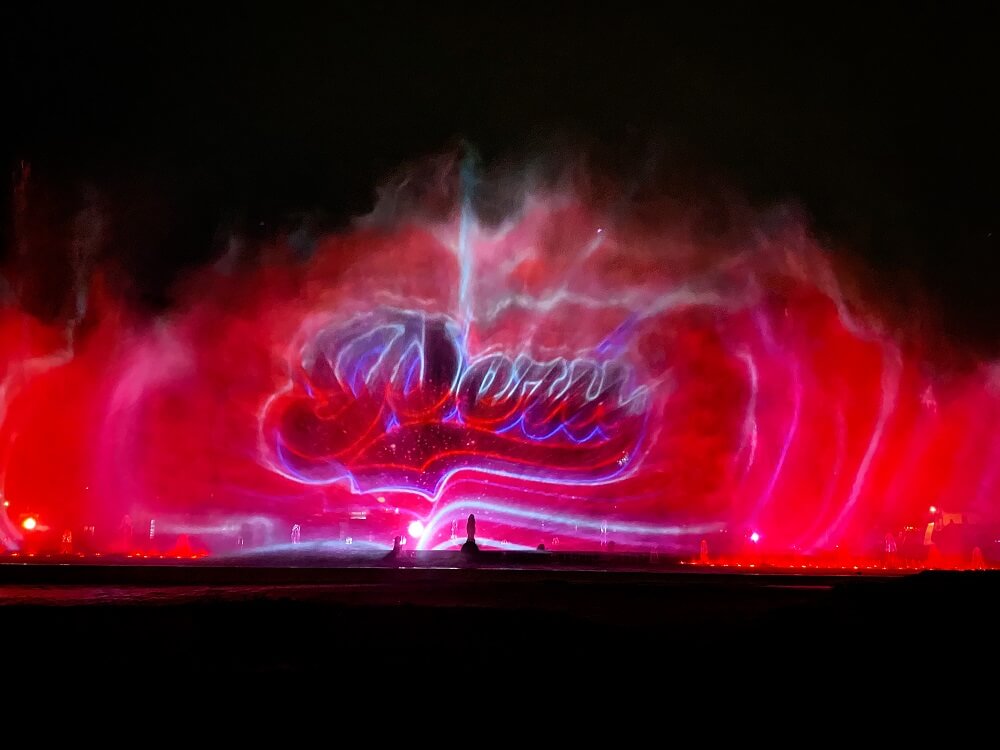
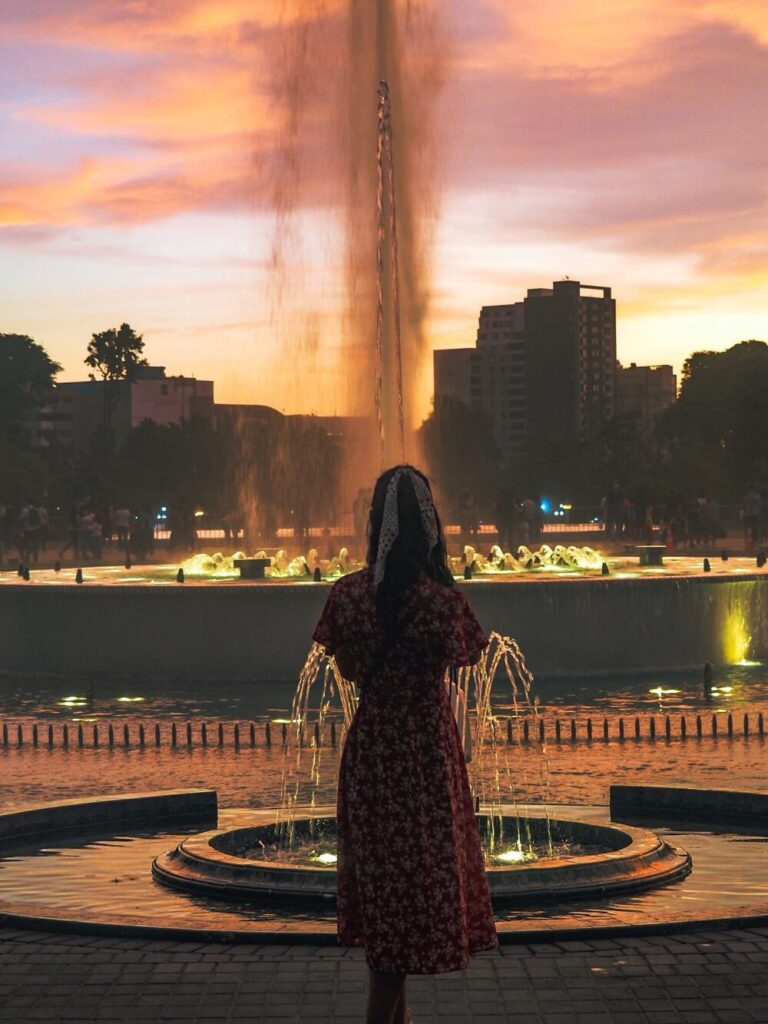

6. Visit the Magic Water Circuit – The Coolest Activity in Lima’s Historic Centre
Why not end your day in the Historic Centre with the coolest activity in the city?
Right next to Parque de la Exposicion is a modern park called Circuito Mágico del Agua. It even has the Guinness World Record for the largest fountain complex in the world with 13 interactive fountains that are illuminated at night. What’s also great about this park is that you’ll find just as many locals here as tourists.
We recommend you arrive here a bit before sunset, so you can walk around the park during daylight too. After the sunset, the fountains will come alive with coloured lights. Every night there’s also about three impressive light shows at the largest fountain accompanied by classical and Peruvian music. Trust us, it’ll be one of the best experiences you’ll have in Lima.
Opening Hours – The park is open from 2:00PM until 10:00PM. The light shows take place at 7PM, 8PM and 9PM. Click here to confirm current opening times and show times.
Entrance Fee – S/.4 (approx. US$1 / £1) per person.
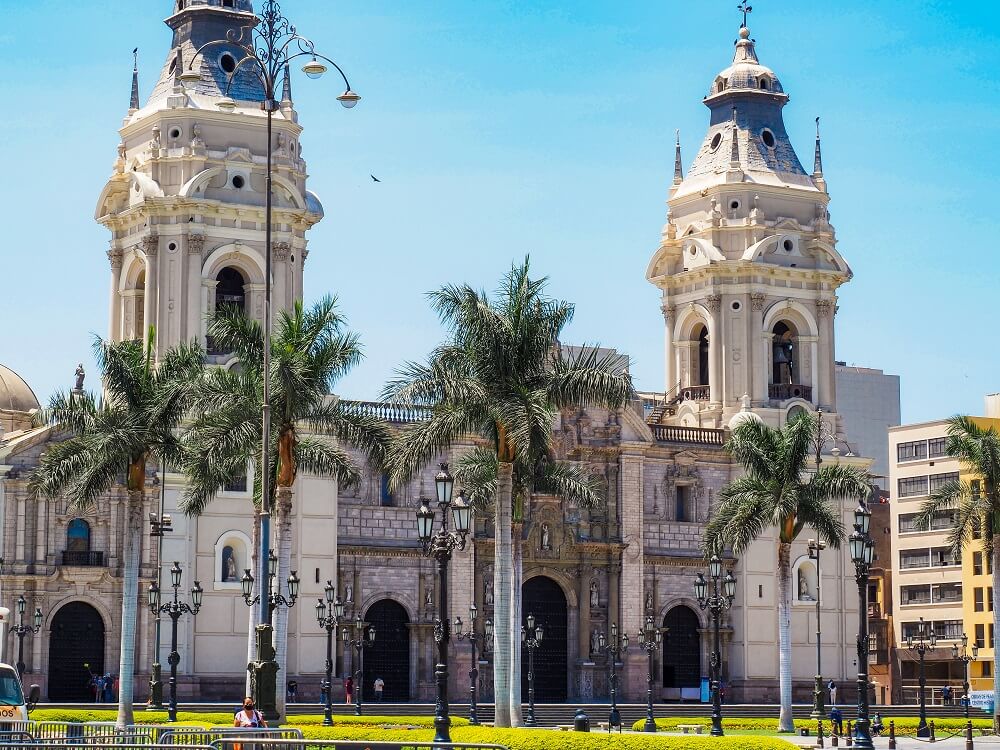
Final Thoughts on Things to Do in Lima’s Historic Centre
As you can see, there are quite a few things you can see in the Historic Centre of Lima. Whether you’re into history, culture or architecture, you can definitely find something interesting around here. I think our favourite activities were the tour of the Catacombs and the Magic Water Circuit.
Have you ever been to Lima before? How much of the city did you manage to explore? Let me know in the comments below.
Now, let your adventure begin,

Our Top Travel Resources
Accommodation: For hotels we always use Booking.com and Hostelworld for hostels. We also book longer stays on Airbnb or Vrbo.
Flights: To find the best flight prices we always check Skyscanner, Google Flights or WayAway. Then we also check the airlines’ websites too for comparison.
Car Rentals: We use Discover Cars when we want to rent a car as it compares local, national and international companies.
Activities: If we book organised tours we always check either GetYourGuide or Viator.
Foreign Currency: Whenever we can we prefer to pay in local currency and for that we always use our Wise card. We can easily withdraw money from the ATM or pay by card at most shops and restaurants.
Travel Insurance: We never go anywhere without travel insurance. You never know what will happen on your trip, so good travel insurance like SafetyWing can protect you in case of injury, illness, theft and cancellations.
eSIM and VPN: To get data abroad we use Airalo which is an app that allows you to download a prepaid eSIM to your phone in over 190 countries. Make sure to have a VPN to avoid hackers accessing your personal data when using public WIFI. We use Surfshark which is the only VPN that offers one account on unlimited devices.
Remember…It all starts with a Pin…
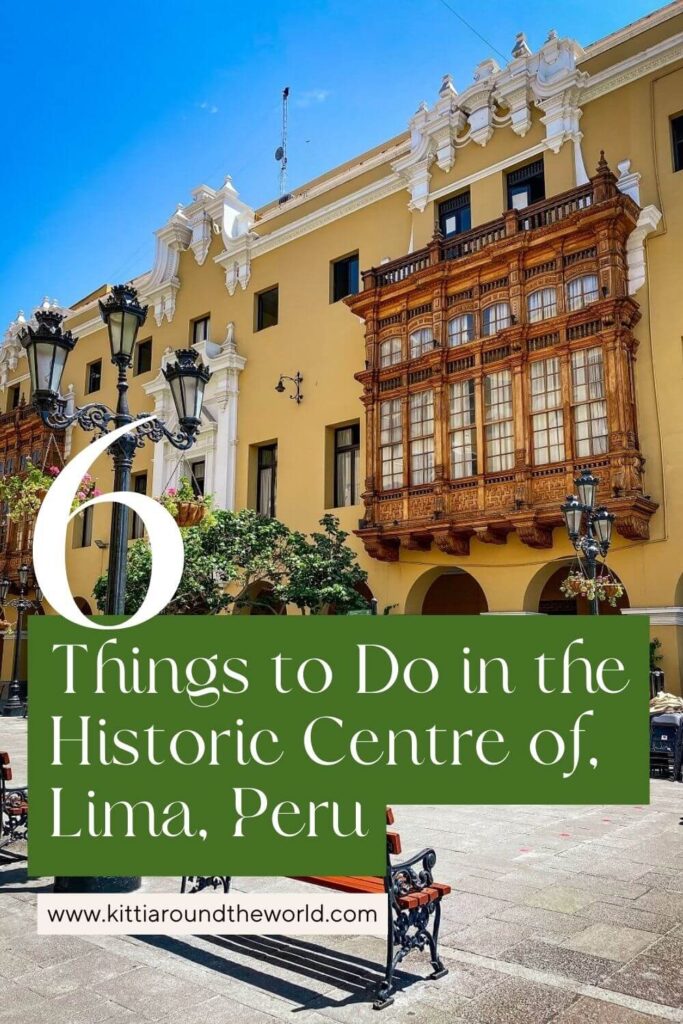


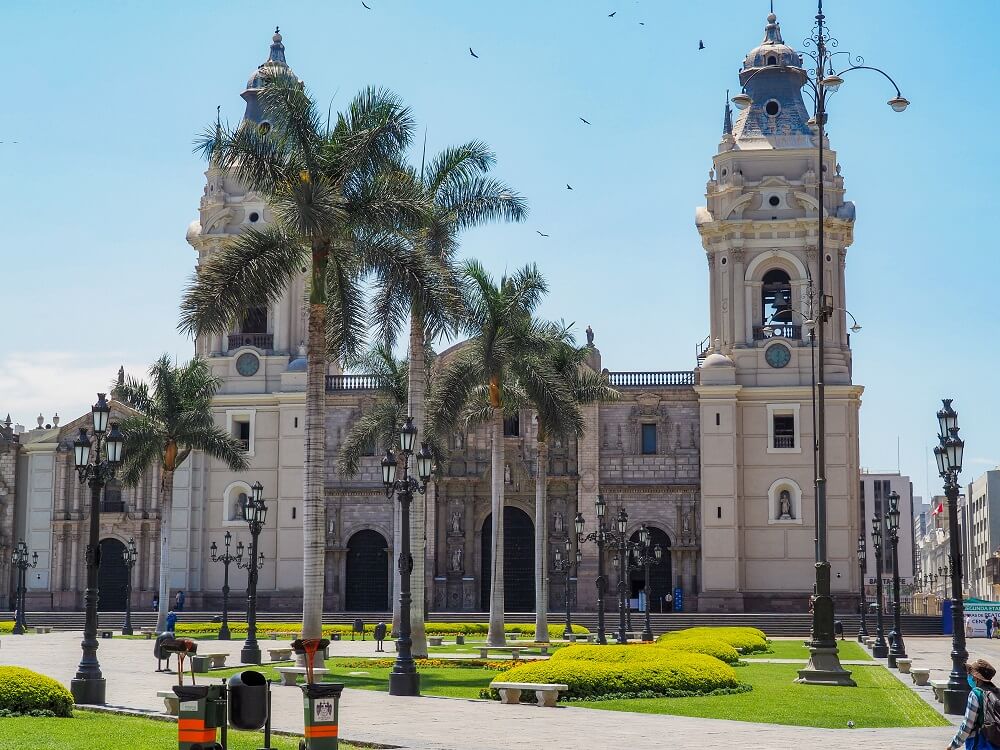

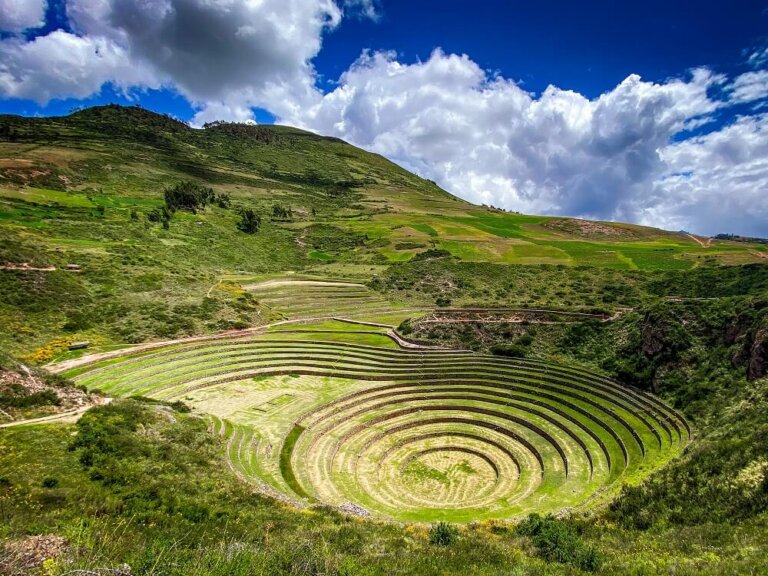
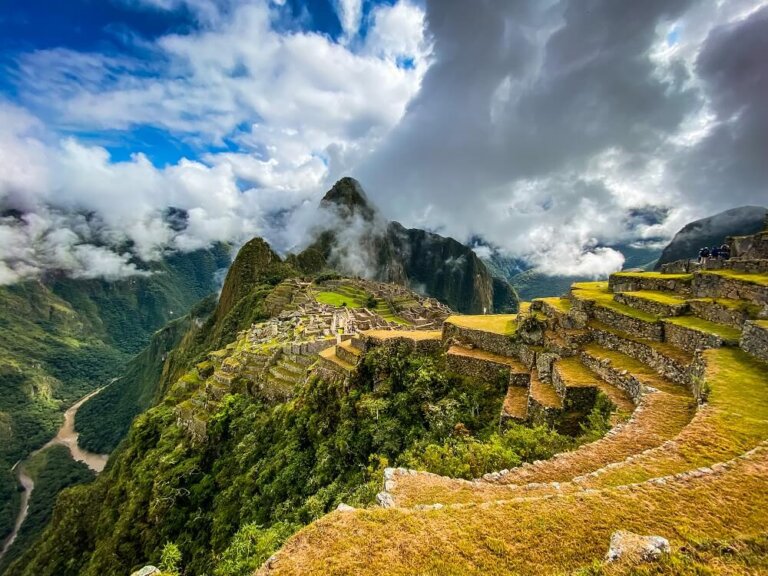
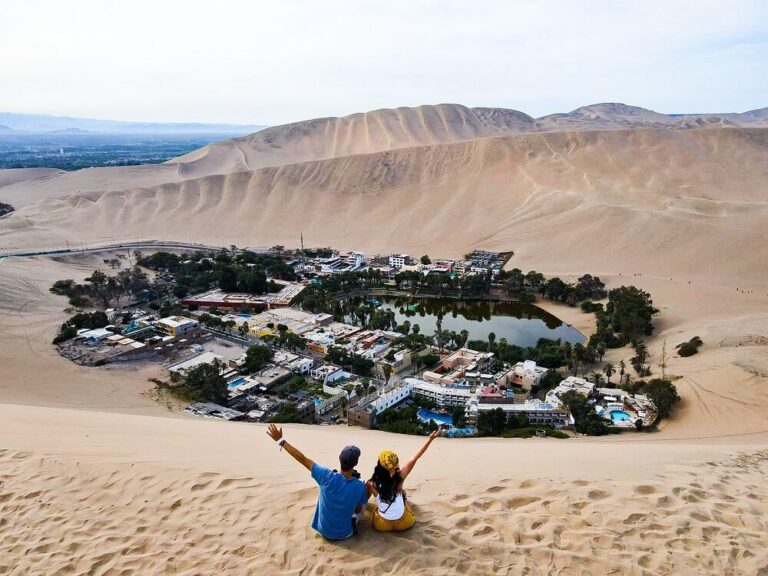
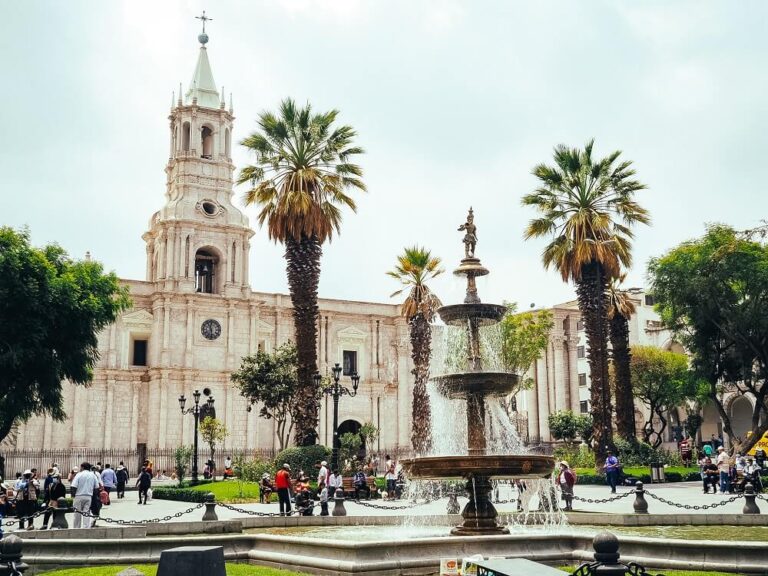
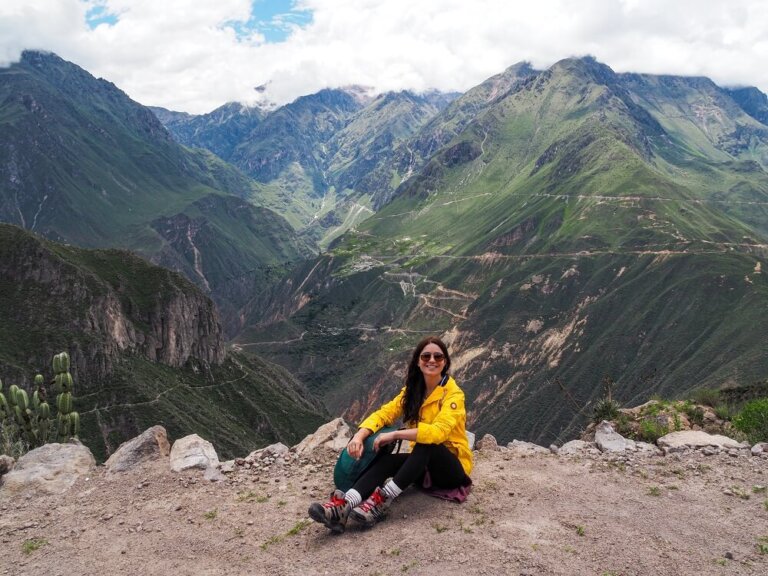
Thanks.
You’re welcome!
I know very little about South America, and always wondered whether it is safe, so thank you for the detailed paragraph on travel safety in Lima. I wish to visit parts of South America including Peru but it’s a long flight and my holidays are short…
Thanks for your comment Anja. South America is relatively safe, of course petty crime can happen just like anywhere. We never felt unsafe, but we were also careful. I hope you can get to the continent and visit Peru in the future 🙂
I had never really considered visiting Peru, but this article is convincing me! I’m also a history buff and love learning all about the places I visit. Thanks for sharing!
We’re so glad to hear that Taylor. Peru is a fantastic country and there’s plenty of history, so we’re sure you’d love it too.
I almost took an internship in Peru and this post just made me regret not going there! I was looking at staying in Miraflores. The Historic Centre looks similar to Puerto Rico’s Old San Juan. Have you been? My kid will surely enjoy Parque de la Exposicion looking at the photos!
Oh wow, an internship in Peru would’ve been amazing! But at least you can visit with your family which will also be just as special. Oh yes, we’ve been to Old San Juan and you’re right it’s definitely similar.
what a fantastic and exhaustive travel guide . I’d love to visit the historic center soon